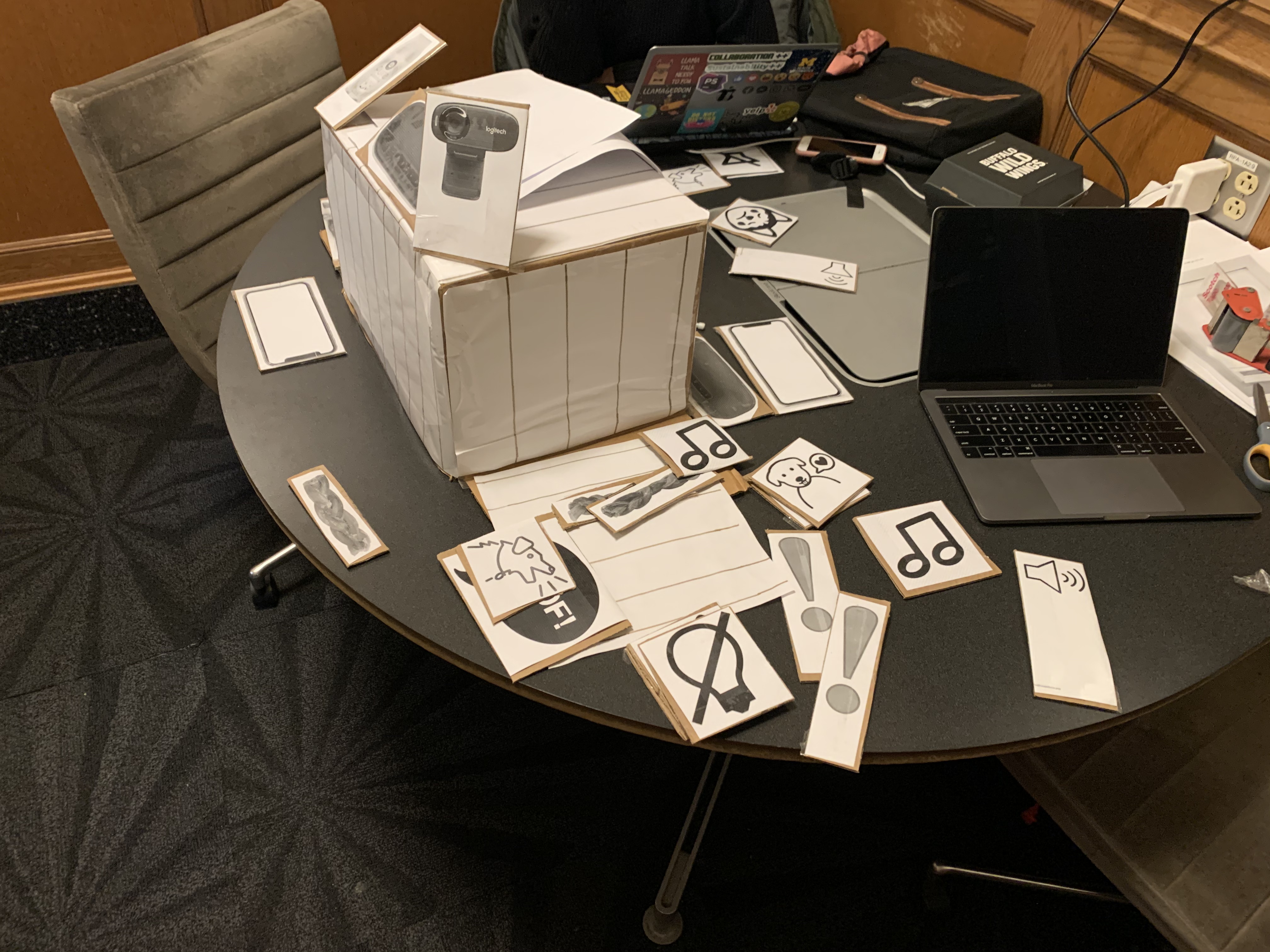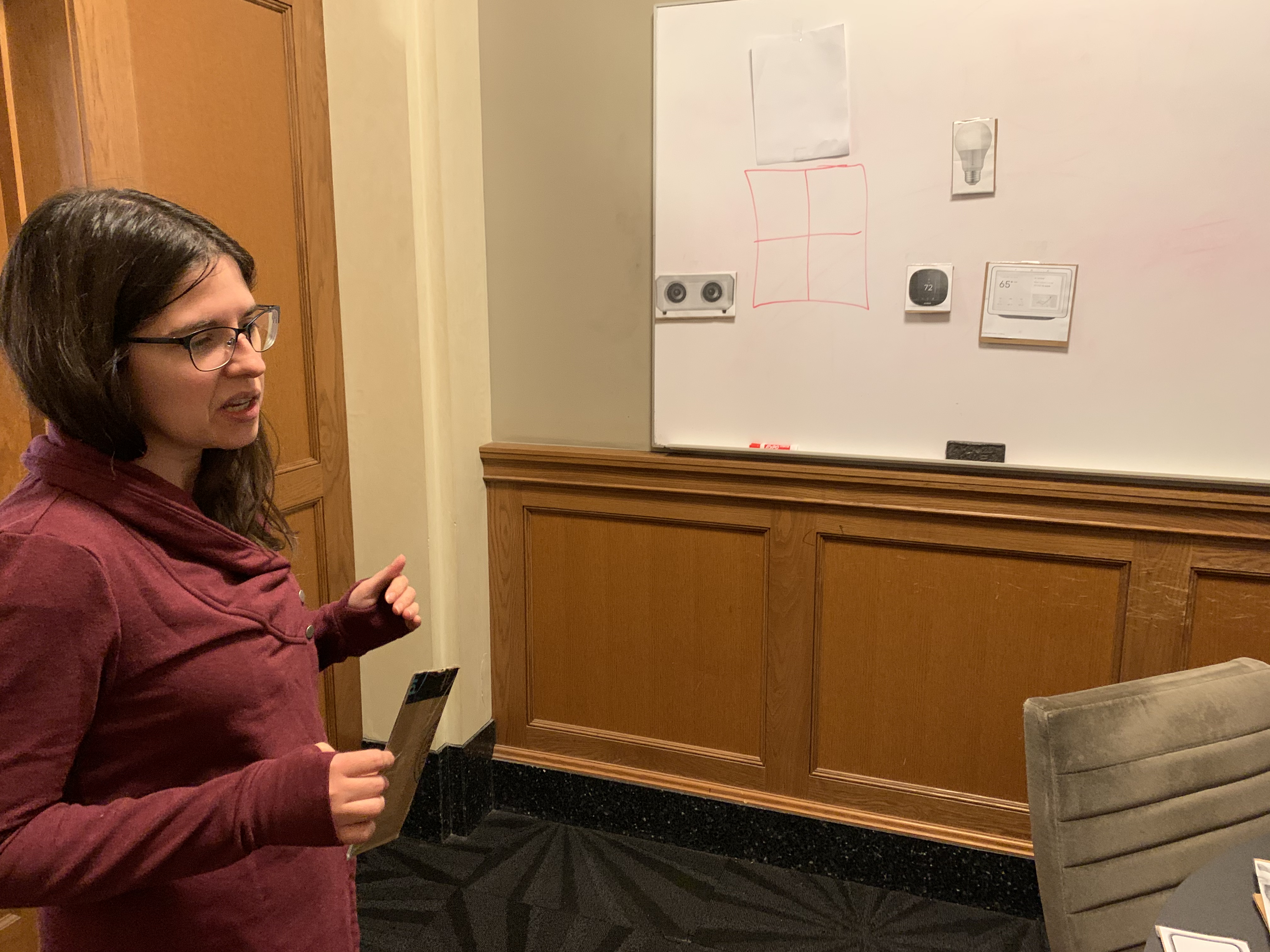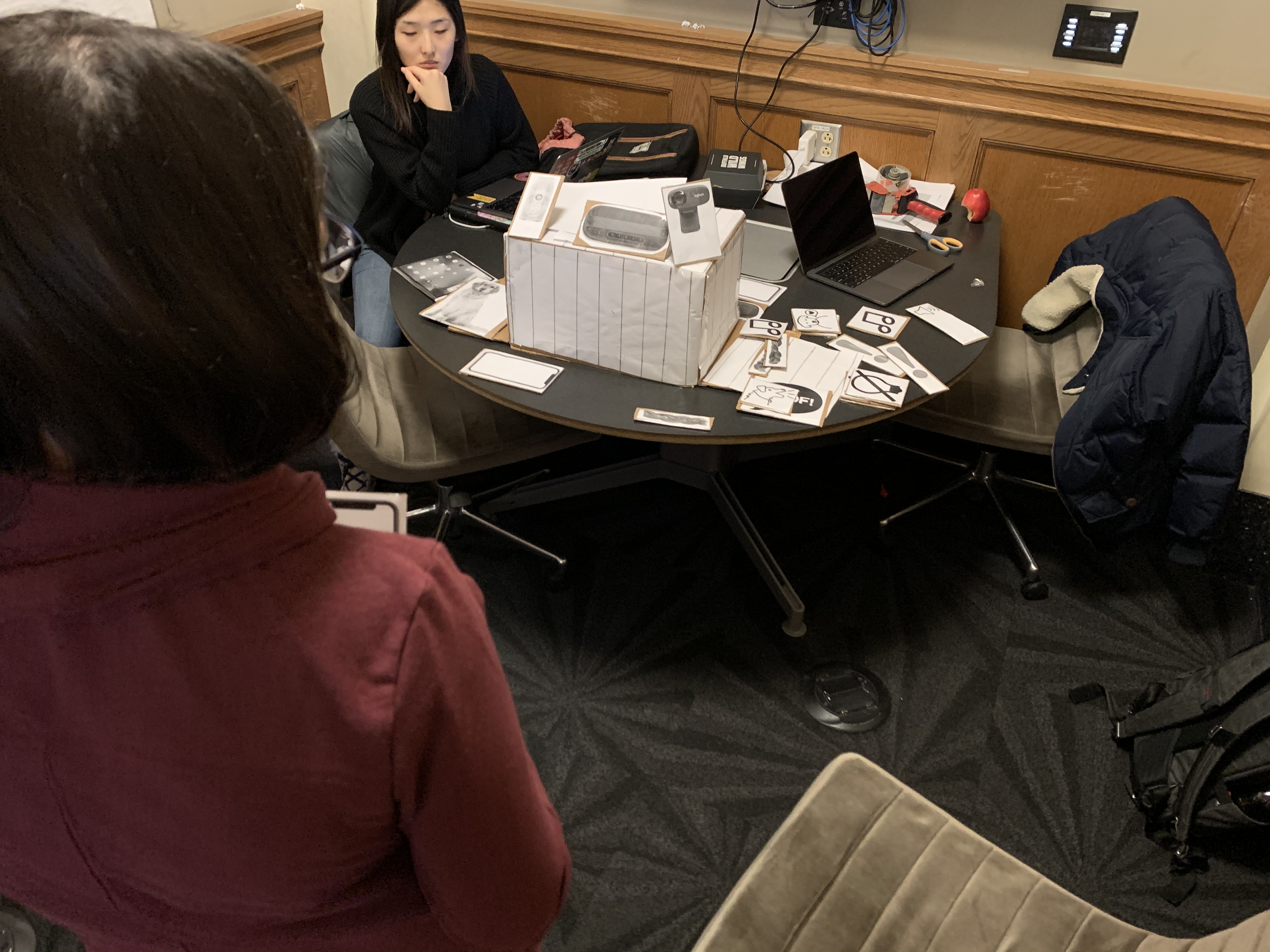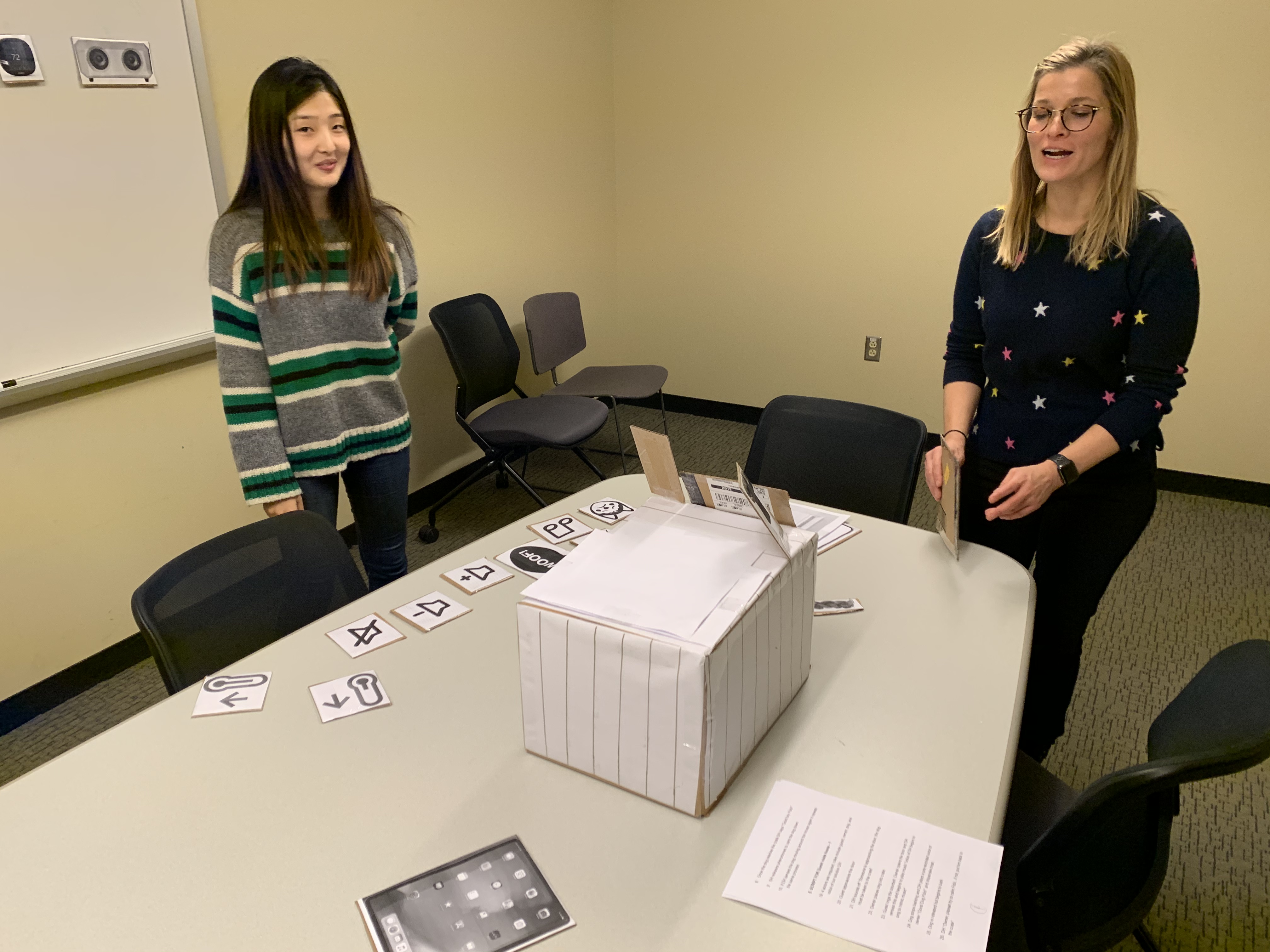PAWLS
Product Introduction
PAWLS is essentially a smart crate system that decreases disruptive barking in dogs using positive reinforcement and stimulus masking methods. It can collect data about a dog’s barking, collect information about what triggered the barking, and is capable of coming up with personalized recommendations for users detailing steps that the owner can take to aid the training. There are two components to Pawls, the physical crate that uses pervasive technology and the mobile app which gives users the power to access all the collected data in digestible form and it also allows them to control the crate.
PAWLS could be called a comprehensive training solution that guides new dog owners through the training process and facilitates the development of healthy behaviors and a strong bond between owner and companion. Based on our findings, we believe this system will address the needs of dog owners whose companions are experiencing behavioral issues.
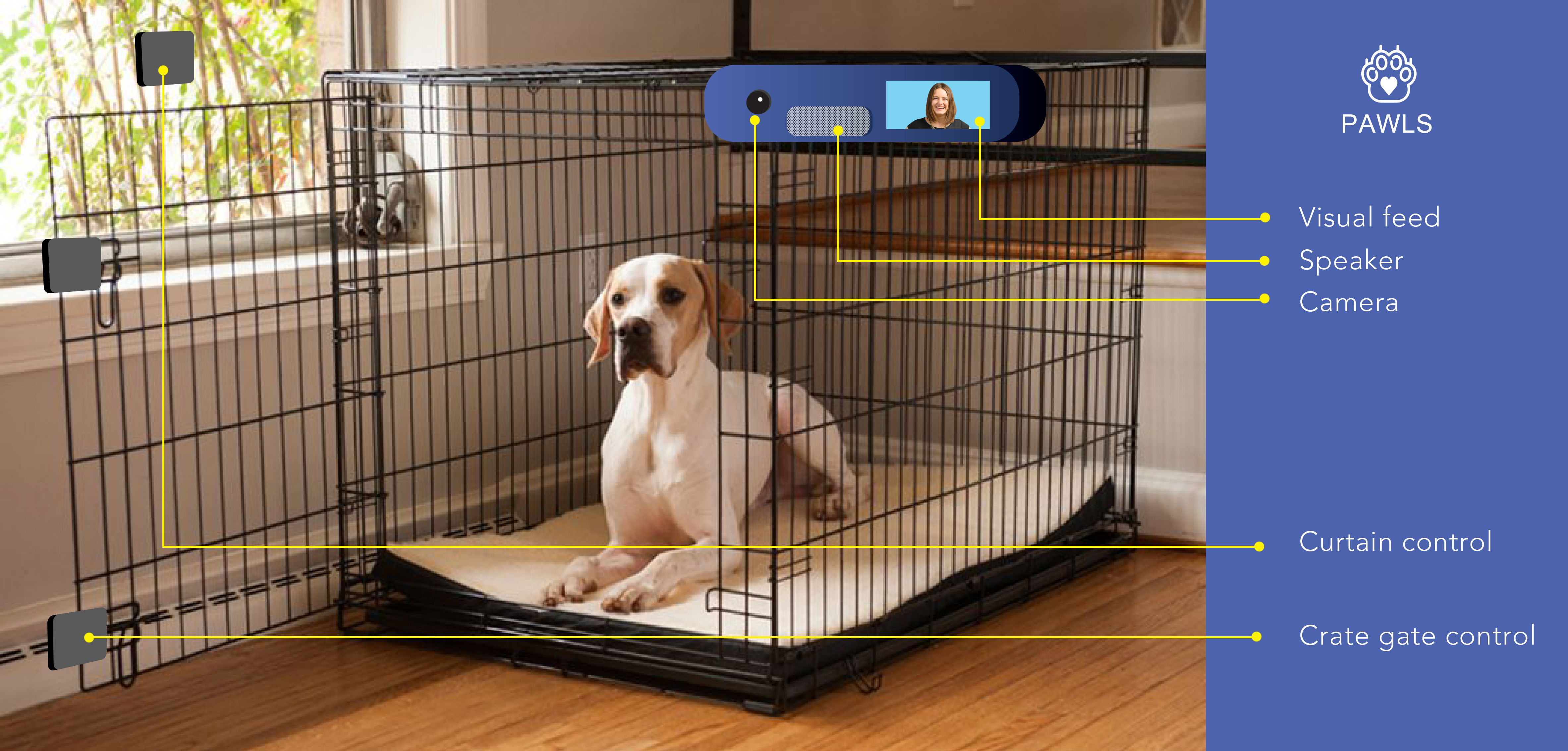
Motivation

Each year, approximately 6.5 million companion animals enter shelters in the US. Less than half of these animals are adopted. One of the main reason why animals are returned is behavioral issues. In order to address this issue of pet homelessness, we decided to explore how ubiquitous computing can do two things: decrease the number of dogs being given up by their previous owners to shelters and ensure that newly adopted dogs stay adopted and remain in their new homes. Our preliminary goal was to build a system that assists owners in training their dogs, and a systems that mitigates behavioral issues like barking.
Key insights

1. Common issues that were cited as reasons for return include destructive or otherwise unacceptable behaviors.
2. Reggae and soft rock came out as the best genres for reducing stress, barking and heart rates.
3. Behavioral issues are both the number one complaint of new pet owners, and the number one reason animals are returned to shelters.
4. Barking, whining, and other maladaptive noise-related behavior were among the most common issues experienced by newly adoptive pet owners.
5. 80% owners sought help from some kind of professional, including behaviorists, trainers, veterinarians, or adoption specialists.
6. Positive reinforcement was a method preferred to regulate bad behavior. Behavior influencing solution was preferred by the owners..
7. Owners would like to have more control over the system, and rely less on automation.
8. Users preferred having data on everything.
Experience Prototype - User enactments
Our experience prototyping study involved conducting five user enactments with each of our five participants for a total of 25 user enactments to answer our four research questions. Through the user enactments, we wanted to understand users’ perception and the strengths and weaknesses of our product in varying scenarios.
1. What smart crate features do users see themselves using at home versus when they are away from their home?
2. Does the smart crate feel invasive?
3. How much remote interactivity and automation do owners expect from their smart kennel?
4. What kind of information should be regularly available from their mobile devices?
Finding 1: Owners would like to have more control over the system, and rely less on automation
Initial setup of system should include a process to learn user’s preferences for automated vs manual features. System should use companion application to notify user when taking action, and give the owner the opportunity to stop or “snooze” the action if it’s not what they want. Automated features should still be available for users that like them, but should not be the default
Finding 2: Being unable to react is just as bad as being uninformed
Notifications should be solution-oriented and give the owner a sense of agency. System should have alternate means of communication with the owner, such as SMS, if the application isn’t working.
Finding 3: Data is king
Companion app should aggregate and display information in the form of graphs or other easy-to-read visualizations. Companion app should make it easy for owners to identify patterns in order to adjust their training regimen. Companion app should utilize data to show progress and aim to motivate the user. The system, including the companion application, should be transparent about the data it collects and make it easy for the user to locate and use the data.
Finding 4: The system should train the owner as much as it trains the dog
The system should have the ability to use the data it gathers to make recommendations to the owner. The companion app should aim to educate the user when it makes a recommendation, rather than just supplying the recommendation. The companion app should use user input and available data to show the user’s progress, as well as the dog’s
Final System Concept
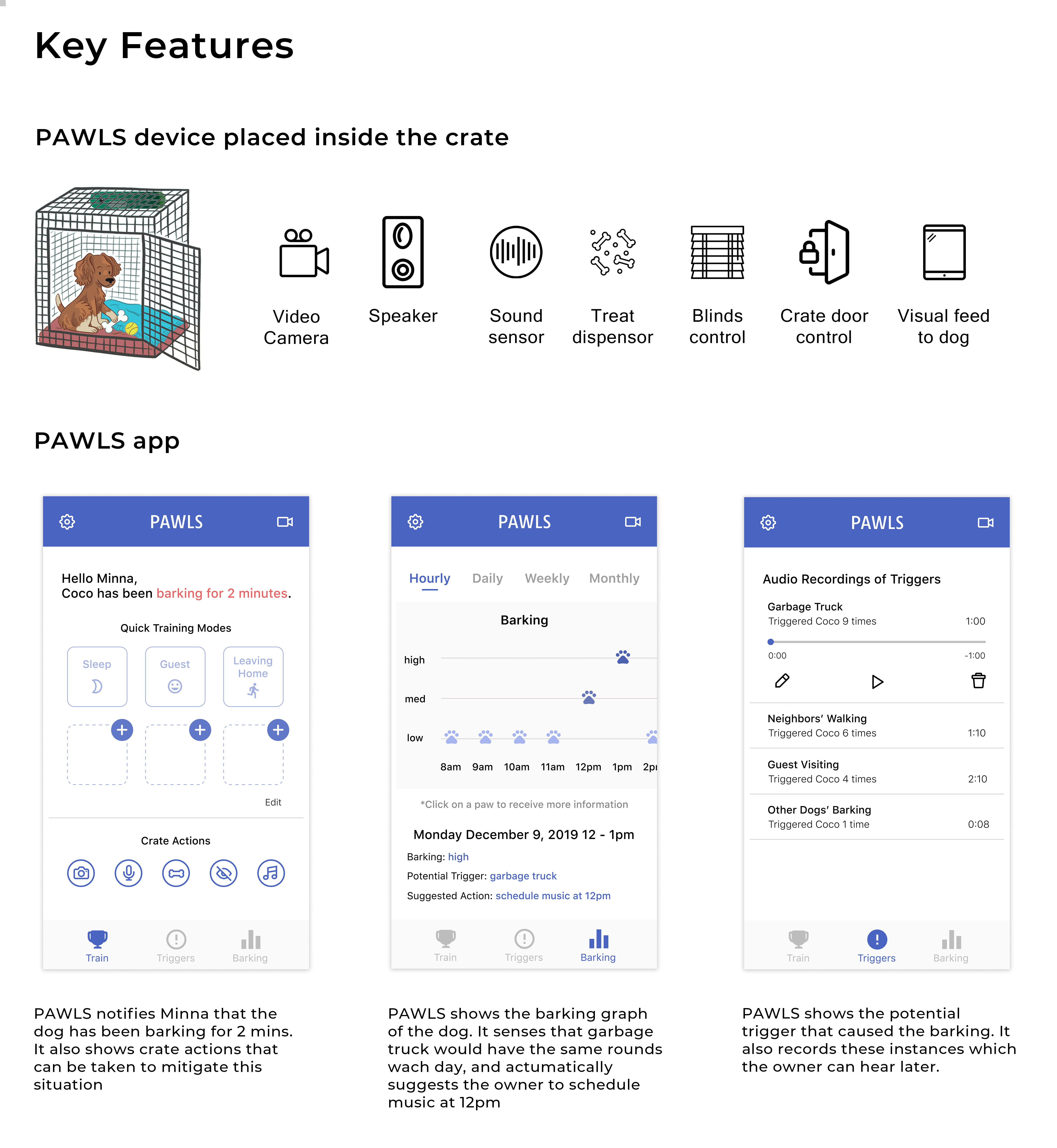
Video camera will be used to record the dog behavior. Video camera is controlled using the PAWLS app. Owners will be able to talk to their dogs using the speakers. Sound sensors will essentially help the PAWLS detect when the dog is barking. With treat dispensor the owner can give treat to the dog anytime with just one click on the app. PAWLS app lets the owner controls blinds and crate door using the app. With visual video owner can video chats with their favorite pet!
Video
Prototype
Key features prototyped
1. Visual feed: Users could see dog's activities in the crate2. Speaker: Owner could talk or play soothing music through the speaker. Speaker can controlled through the prototyped app
3. Treat dispensor: In our prototype we showed how owner could control treat dispensing through the app.
4. Being able to remote into the PAWLS kennel and view a live video feed
5. If the owner notices any distress occurring, they can begin playing music from the smart bluetooth speaker
After researching various IoT microcontrollers, our group decided on utilizing a Raspberry Pi 3 Model B+ instead of an Arduino or Particle Board. The Raspberry Pi’s quad-core processor is best suited for processing and streaming high-definition video. The Raspberry Pi’s extensive DIY community helped guide our software implementation, which involved running open-source “Motion” software, which offers extensive options related to recording video streams. We also needed to identify a camera that could record the entire area within a kennel using a fish-eye style lens.
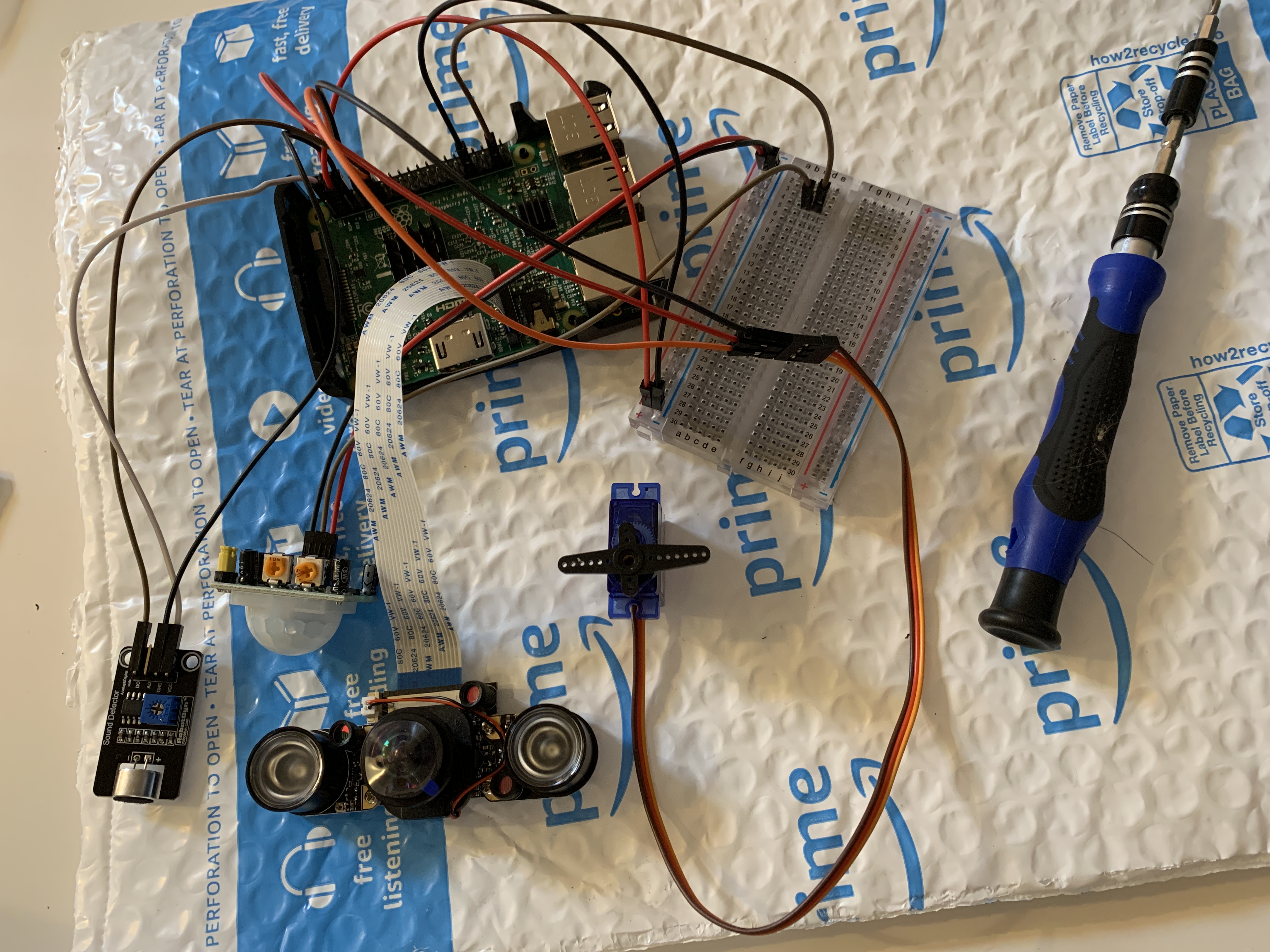
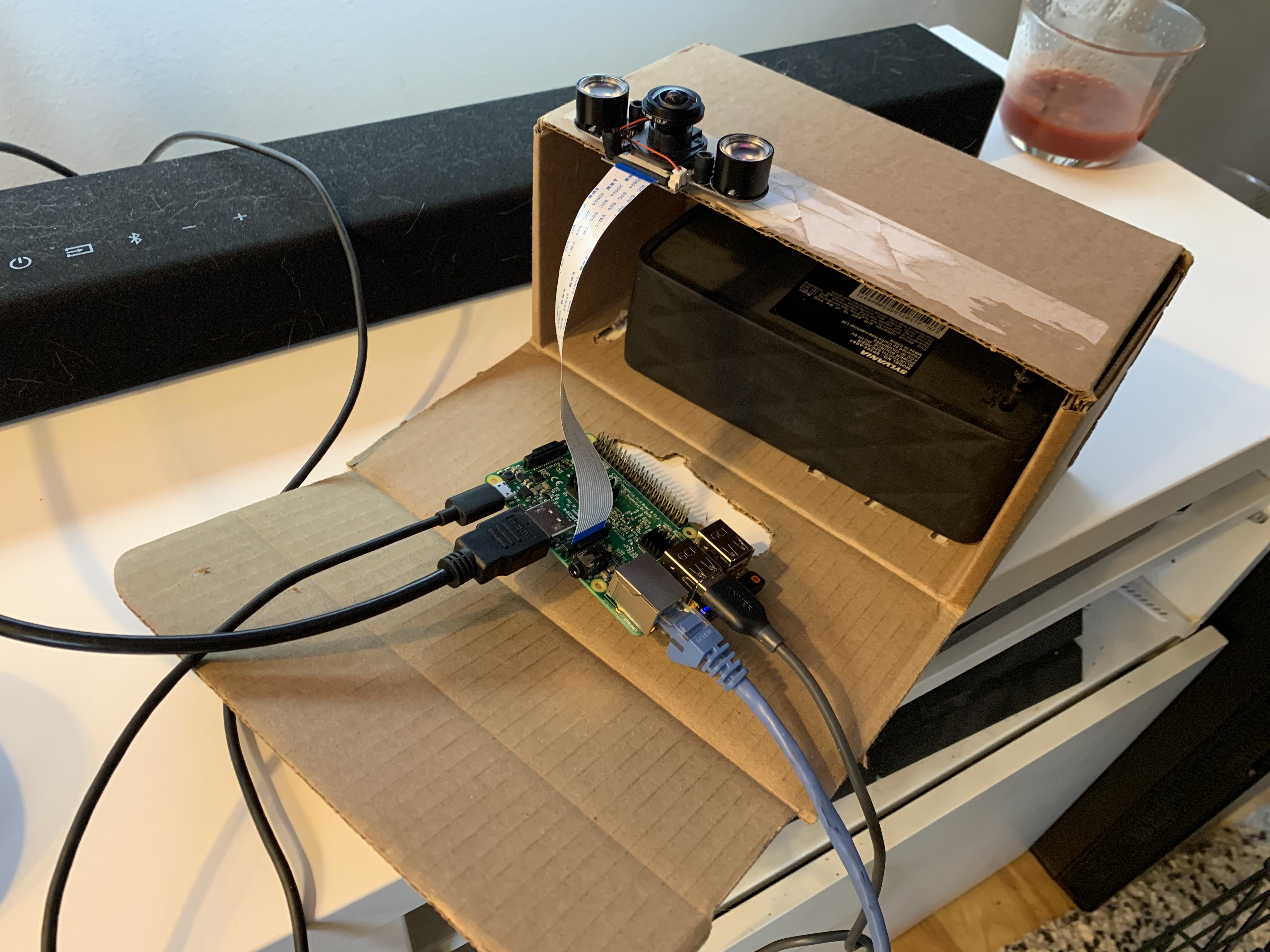
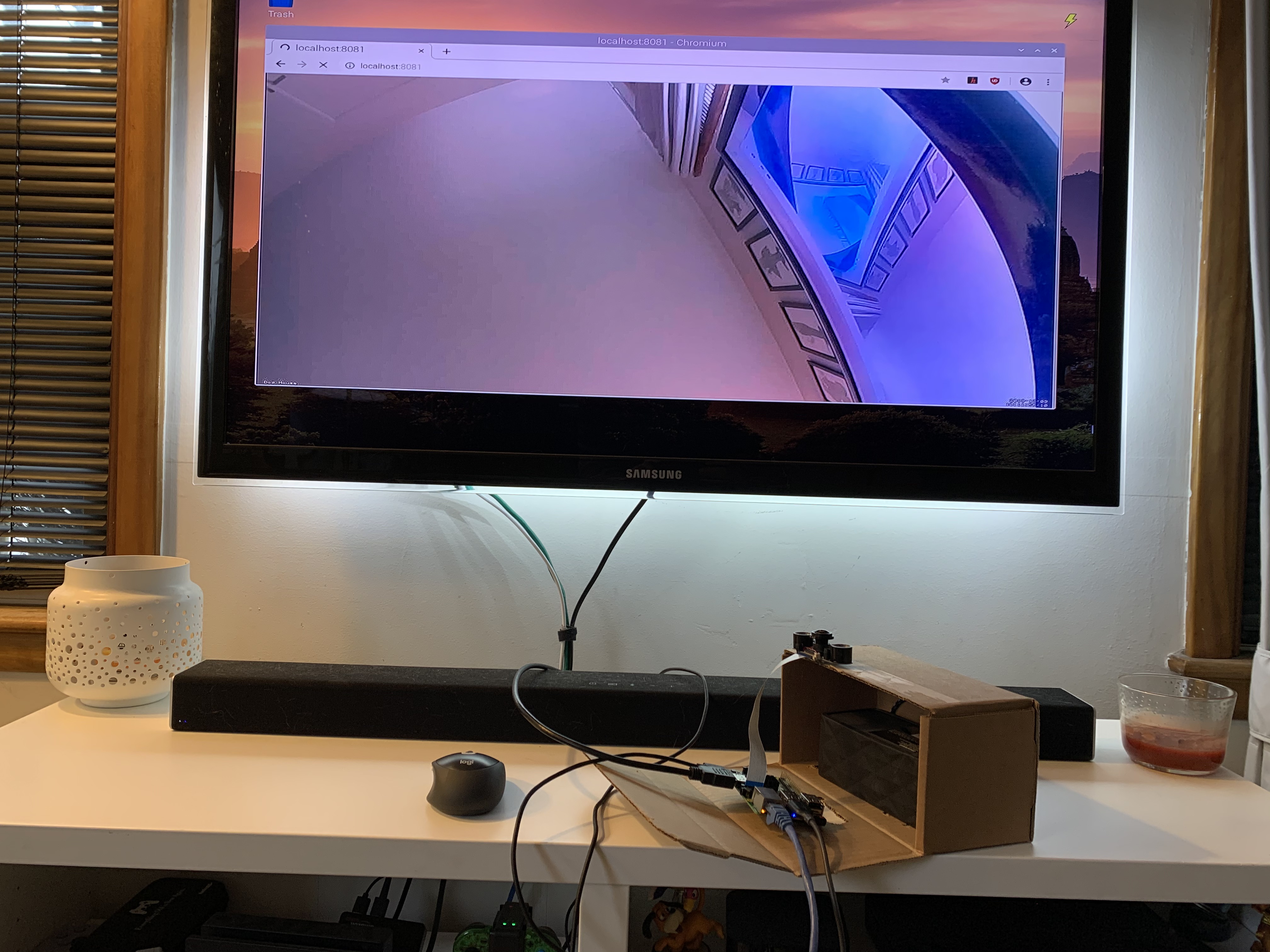
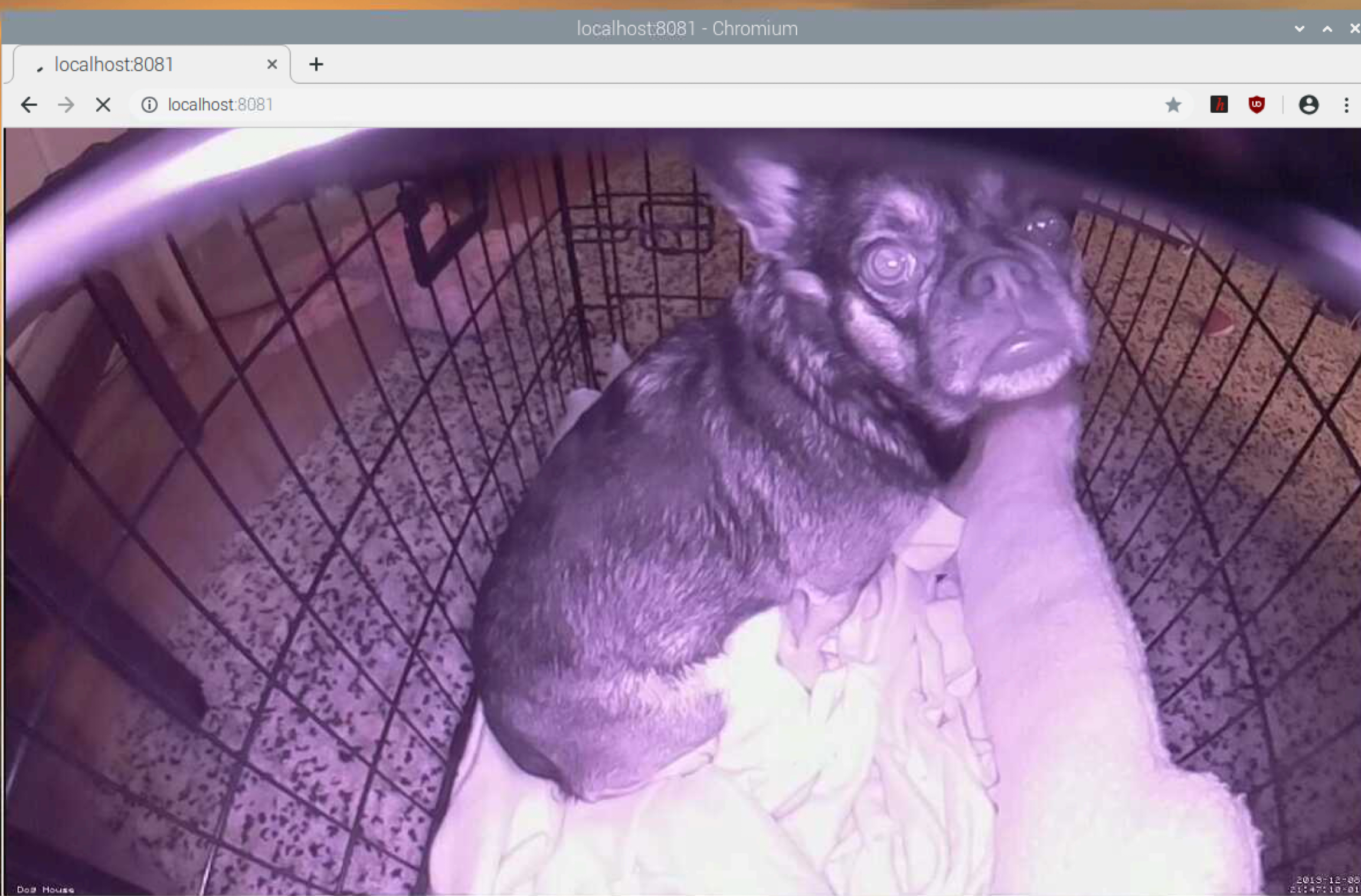
Ideal System Proposal
While our demo was able to capture important elements of the PAWLs smart kennel experience, there were many features that weren’t able to be prototyped due to lack of time and funding. The ideal PAWLs smart kennel system would include the following components:
Integration into other smart home devices that could help aid in reducing the dog’s overall stress, including smart speakers, blinds, cameras, and thermostat.A fully featured system that can analyze and identify different kinds of triggers that may be occurring in real-time. A large data-set of audio recordings of various loud noises, including specific breeds of dog barking may be needed.
Ideal System Architecture
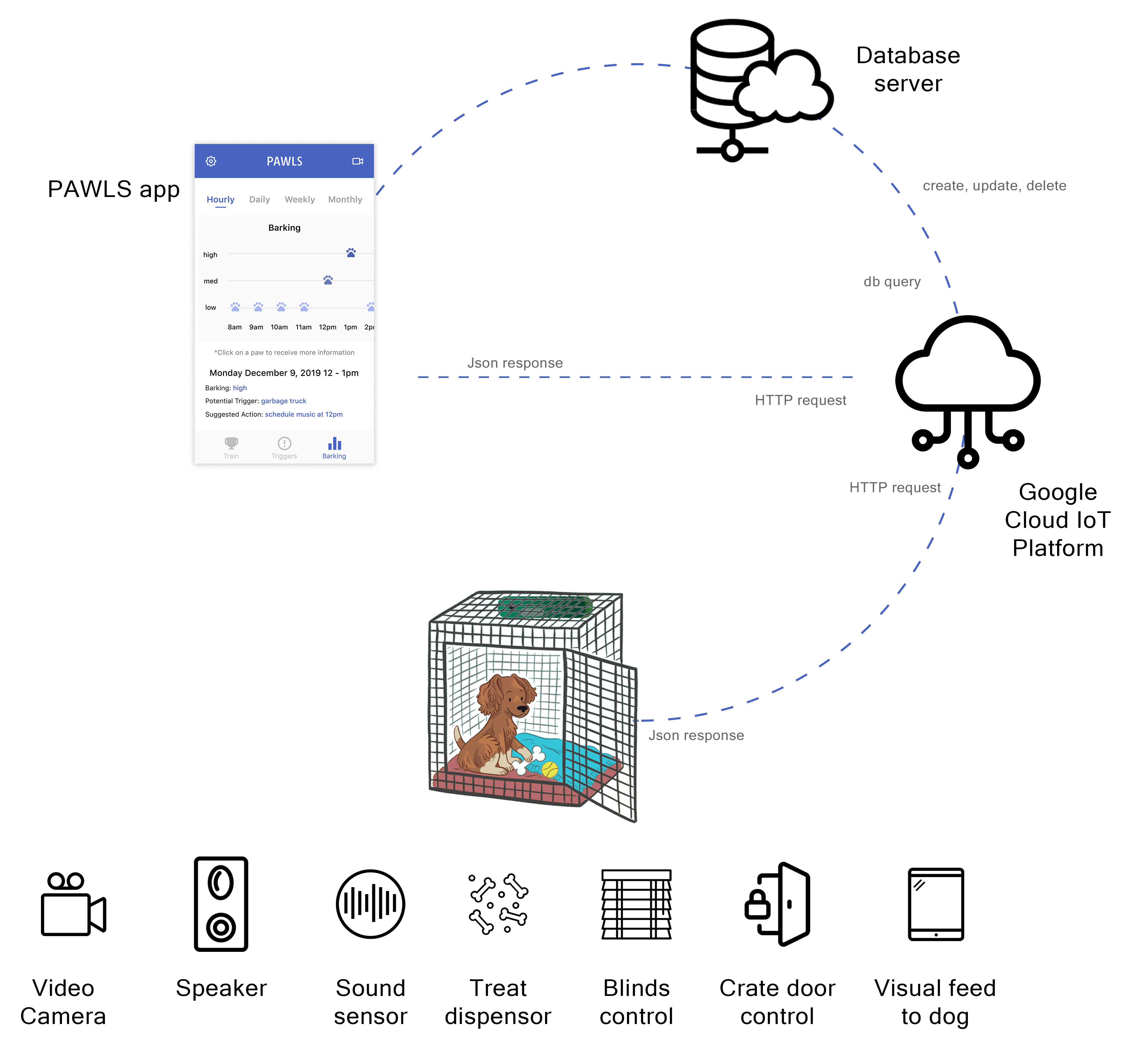
The PAWLs smart kennel is constantly sensing your dog’s emotional levels using sensors to help recognize and react to various triggers that may occur when the dog’s owner isn’t home. Using that data, PAWLs will aid the dog owner in properly training the dog so it will be less distressed when the owner is not home. A mobile app that communicates with a web-based database & IoT cloud platform would have to be set up to properly connect a PAWLs user to the device when they aren’t home. Due to the sensitive nature of placing microphones and cameras in an owners home, it’s important to create a privacy policy that clearly states how the data will be used and protected with the use of encryption.
Reflections
Dogs might not be accustomed to crate training or worse, the crate can be a source of negative and hostile feelings for the dogs. When the owner is not home, PAWLS is most effective once the dog is lured into the crate, but is not effective when the dog is not. Trying to lure the dog into the crate might be more difficult in real life filled with many variables. Connect with sensors within and outside the home, rather than just solely rely on sensors within the smart crate.
